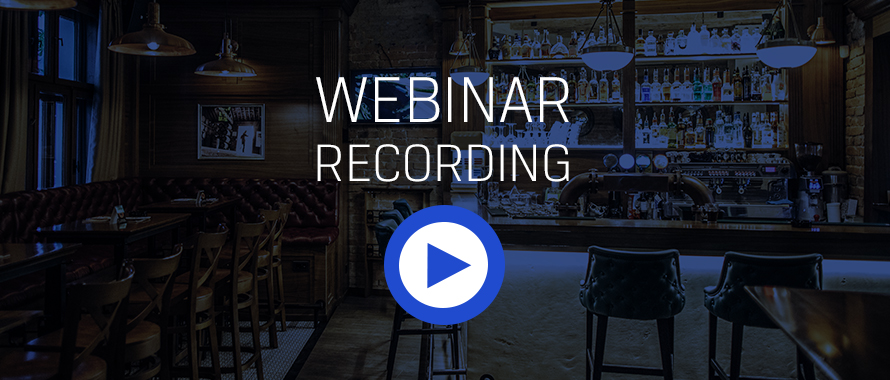Rising premiums, decreased capacity, an enhanced focus on details and fallout from labor shortages are the main trends facing clients requiring Restaurant & Bar Insurance more than halfway through 2021.
A hard market that first began in 2018 accelerated during the first several months of the pandemic, with tens of thousands of restaurants and bars around North America closing either temporarily or permanently. A January 2021 Fortune magazine article estimated more than 110,000 eating and drinking establishments in the United States closed for business—temporarily or permanently—in 2020.
As the calendar turned to 2021, new challenges emerged that business owners in this industry are having to overcome. Fortunately, Burns & Wilcox is able to work with brokers and agents to help find affordable coverage for most restaurant and bar clients, but the more profile information the better to secure coverage. Below are some of the current trends in the Restaurants and Bar Insurance marketplace.
The labor shortage continues to put stress on liabilities
The labor shortage in hospitality has been well publicized, but it’s not just affecting lower-paid team members or wait staff. Many clients are experiencing a shortage of management staff as well. The staff members that do show up for work or are taking available positions are often less experienced, requiring more training and oversight.
This all leads to added liability for restaurant and bar owners, as less experienced staff (or a staff that is short in numbers) can lead to poor performance and more mistakes, from not remembering to de-ice parking lots, or forgetting guidelines for serving alcohol. This places an added importance on staff training. In this type of stressed environment, following proper protocols, setting required guidelines, and not cutting corners will help reduce risk and keep a restaurant more insurable.
The labor shortage is also causing many restaurants to reduce their hours of operation. This can include closing the restaurant completely for slower days like Monday or Tuesday. It forces some employees who do want to work to take on two or more jobs to get the hours and income they need. Overworked employees lead to mistakes and higher liabilities.
On the property side, restaurants or bars that are empty for days at a time, rather than hours, can lead to higher risk as well. Storm damage, an indoor water leak, sewer backups and more may not be noticed right away, leading to more claims and greater damage. These factors will all impact pricing and capacity, even for clients with a clean profile.
Percentage of liquor sales matter more than ever
Restaurants or bars with a higher percentage of liquor sales have always posed higher risks. However, during a tight market this increased liability is further magnified. Throughout much of the U.S. and Canada, restaurants with a less than 50 percent rate of alcohol sales would find affordable policy rates in past years. Those rates may be double what they were in 2018. The increases might be even higher for those businesses with liquor receipts above 50 percent.
Nuclear verdicts play a factor. While foodborne illnesses can lead to lawsuits, so can assault and batteries that take place on a property, especially where liquor is served. Large liquor claims are commonly being awarded full limits. This litigious trend is cutting into carrier profitability.
When applying for coverage, anything related to liquor can impact a business’ risk profile. This includes details about a restaurant’s happy hour, average age of clientele, the number of a liquor options on a menu and more.
Other post-COVID liabilities have emerged
We know the impact that COVID has had in this industry with past restrictions and mandates, and eventually labor shortages. Other post-COVID trends have emerged too.
- The hosting of new events – more restaurants have hosted a band in their outdoor parking for example, especially in regions where indoor restrictions were mandated. While this can drive more business, it also increases liability, and if a related claim is made, carriers may choose to cancel coverage if they were not aware of a hosted event onsite.
- Food deliveries and pick-up parking lot deliveries – while third party companies like Door Dash and Uber Eats offer home delivery, some restaurants offer it directly. Even takeout restaurants that have staff bring food to patrons in the parking lot can increase liabilities.
Cyber and umbrella policies remain important to ensure full coverage
We often receive questions about the viability of Cyber coverage. For example, claims have been made when new employees tried to steal patron credit card numbers, or in a couple of cases even brought a credit card reader to a restaurant.
Risk mitigation strategies are important to manage, however Cyber coverage is a necessity for any restaurant or bar because it will pay for the costs associated with a credit card breach. Canadian restaurants for a few years have brought their own card readers to a table for the patron to insert, so they never touch the credit card itself.
Whether in the U.S. or Canada, there are laws requiring owners to notify patrons of any breach. The cost of that notification can be significant given the potential for thousands of patrons needing to be reached. That scenario in itself is a reason to secure Cyber coverage.
Umbrella coverage is also more expensive than in past years but can be an important way to provide further protection that falls outside of core property and casualty policies.
Tips for agents can make a big difference for clients
Our professionals have indicated to brokers and agents that more detailed information is needed when completing a submission. With the current tight market, every piece of information is being scrutinized by carriers.
We have several recommendations:
- Ensure every submission and renewal is complete and added details are provided. Transparent communication with the carrier is critical.
- Do your homework on every client. This includes reviewing their Google and Yelp reviews, and other online profiles. Carriers are doing the same thing. Any improvement in a restaurant’s online profile can influence policy prices and options.
- Encourage clients to invest in training staff. This investment will likely help save money on premiums because risk is lowered. Training is important for everything from safe handling of food, cleaning and to dealing with challenging patrons. When and how to serve liquor should be documented and consistent.
- Security is important but so is surveillance. Restaurant and bar owners should ensure they have working surveillance systems and that recordings are kept for a minimum of one year.
- Encourage clients to keep detailed logs for anything that could be tied to a potential liability. This can include when bathrooms are cleaned, sidewalks are salted and more.
Summary
We expect premiums to increase in the months ahead, albeit at a slower rate, both for property and casualty. Less capacity and fewer available carriers will be the norm as well.
Perhaps the one thing for brokers to remember is that providing every possible underwriting detail is critical. Wherever a client can differentiate their rate of risk from other applicants will give them an advantage, especially where capacity is limited.
Contributor(s): Jeff Diefenbach, Corporate Senior Vice President, Burns & Wilcox; Patricia Sheridan, Director, Ontario, Commercial Insurance, Burns & Wilcox Canada; Aaron Pfister, Associate Managing Director, Underwriter, Commercial Insurance, Burns & Wilcox; Cain Webber, Associate Managing Director, Burns & Wilcox
This commentary is intended to provide a general overview of the issues contained herein and is not intended, nor should it be construed, to provide legal or regulatory advice or guidance. If you have questions or issues of a specific nature, you should consult with your own risk, legal, and compliance teams.




















